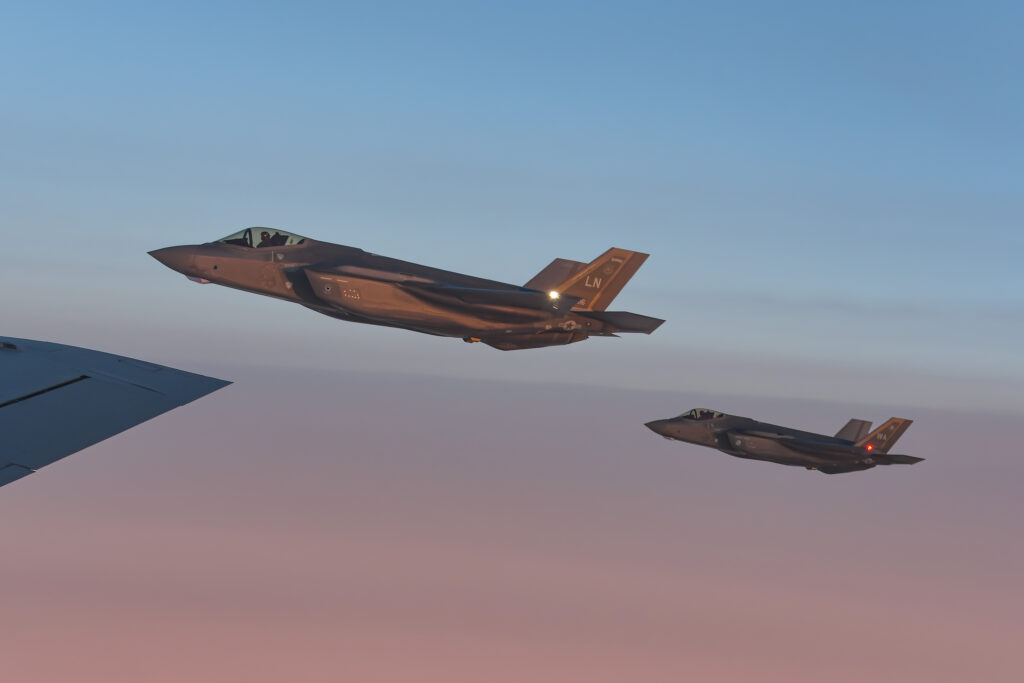ESD was recently invited on board a US Air Force KC-135 Stratotanker to observe part of the Norwegian-led trilateral exercise ‘Apex Buccaneer’. This article details what this exercise involved and examines why exercises like ‘Apex Buccaneer’ are essential in facilitating Arctic security.
On 3 December 2024 Norway, the United Kingdom (UK) and the United States (US) came together for the Norwegian-led exercise ‘Apex Buccaneer’. This was a multi-domain exercise, comprising air, land and sea assets, conducted in conjunction with a US Air Force (USAF) Bomber Task Force (BTF) deployment to RAF Fairford in the UK. The exercise involved combat air assets, strategic bombers, intelligence, surveillance and reconnaissance (ISR) platforms and tanker aircraft from all three participating nations. These assets were integrated with Norwegian army, navy and special forces units to enable two US B-52H Stratofortress strategic bombers to conduct a live weapons drop against simulated enemy positions located within Norway.
Although the B-52s completed the final, ‘kinetic’ engagement, the overall exercise was intended to enhance the three nations’ interoperability and to demonstrate the ability of assets to share data between friendly forces across a battlespace. In particular, the aim was to integrate each nation’s fifth-generation fighter capabilities (in the form of their F-35 Lightning IIs) into operational fold, implementing the aircraft as data-sharing nodes.
In this context, ‘data’ refers to real-time intelligence and targeting information which is used to identify, monitor and potentially interdict an emerging target or threat. In addition, ‘data’ will also include logistics and maintenance information relating to each asset within the battlespace. This enhances a ‘common operating picture’ by dictating what weapons systems are available, where they are situated and how they can be most efficiently mobilised to support each objective.
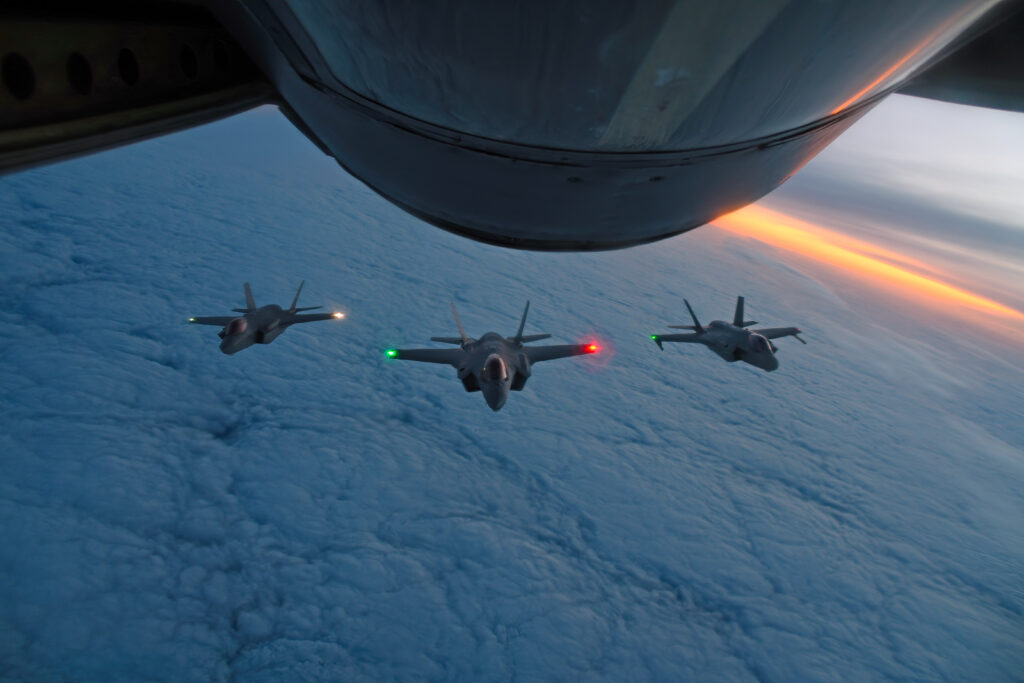
The air component of ‘Apex Buccaneer’ comprised the following:
Royal Norwegian Air Force:
F-35A Lightning IIs (fifth-generation combat air)
P-8A Poseidon (maritime surveillance)
Royal Air Force:
A330 MRTT Voyager (air-to-air refuelling)
Eurofighter Typhoons (fourth-generation combat air)
F-35B Lightning IIs (fifth generation combat air)
RC-135W Rivet Joint (signals intelligence)
USAF:
B-52H Stratofortresses (long-range strategic strike)
F-35A Lightning IIs (fifth-generation combat air)
KC-135 Stratotankers (air-to-air refuelling)
U-2S Dragon Lady (ISR)
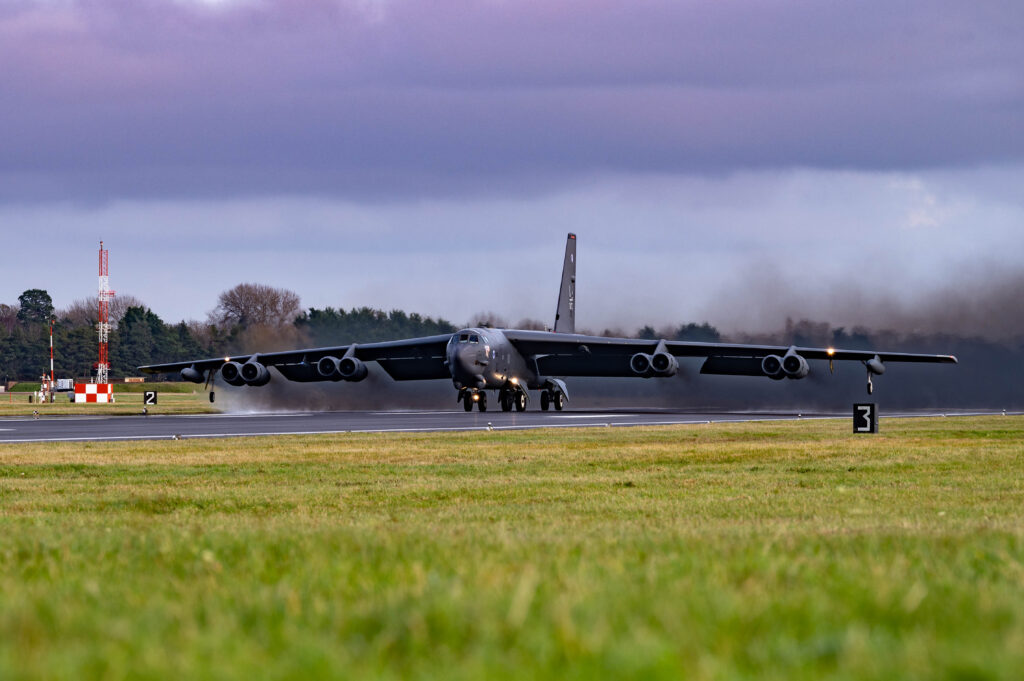
Concept of operations: find, fix, track and target
The concept of operations for ‘Apex Buccaneer’ was for the coalition force to engage with a ‘find, fix, track and target’ (F2T2) mission profile. F2T2 forms part of the USAF’s targeting doctrine as defined within Air Force Doctrine Publication (AFDP) 3-60 under what it refers to as the ‘Dynamic Kill Chain’. This is a colloquial term used to define a sequence of steps that facilitates reactive actions against emerging threats within a battlespace, across all domains.
The framework is exhaustive from start to finish, incorporating all aspects from intelligence gathering, target acquisition and monitoring, weapons system selection, legal structures and post-strike assessments. The Dynamic Kill Chain is not intended solely to direct the use of lethal force, as with air strikes. Rather, it is intended to ensure that the best-suited capabilities are allocated to enable a given task, which might see outcomes including airdrops, information operations or electromagnetic warfare.
Broken down, the F2T2 process is as follows:
Find: General, broad-area ISR gathering is conducted in a predetermined area of interest, where it is expected that there may be potential targets; this enables the detection of emerging threats. AFDP 3-60 dictates that ISR assets should only operate where there is sufficient “idea of what they may collect”. Here, emerging threats are viewed as potential targets requiring further intelligence collection.
Fix: Next, ISR capabilities are cued towards the threat to determine what and where the potential target is and establish whether it is “worthy of engagement”. Here, it is determined whether the target is positively identified and complicit with the rules of engagement. In addition, the window of opportunity to counter it is predicted, which helps guide the target’s prioritisation.
Track: Once a target is confirmed and located, it is then monitored, or ‘tracked’, to identify contextual nuances in the target’s nature and behaviour, further establishing its validity. This is critical for variable targets, such as insurgents, which typically require a pattern of life to be established. This might also help unveil further information such as key figures, adversary bases or facilities that could expand or redefine the mission’s objectives to create more lucrative outcomes.
Target: After it is confirmed that a target should be interdicted, this step establishes the desired outcomes, followed by how and when the target should be interdicted. Here, legal approval to engage is sought, the target area is assessed and a weapon system is selected based on the objectives. Operational considerations are then made based on weather and support asset availability (such as tankers) to ensure efficient and accurate completion of the action.
AFDP 3-60 incorporates two additional phases following the main F2T2, ‘engage’ and ‘assess, that complete a process known in its entirety as F2T2 EA. ‘Engage’ refers to the ordered engagement of a target, while ‘assess’ sees ISR assets continue to monitor the outcomes of the engagement upon completion.
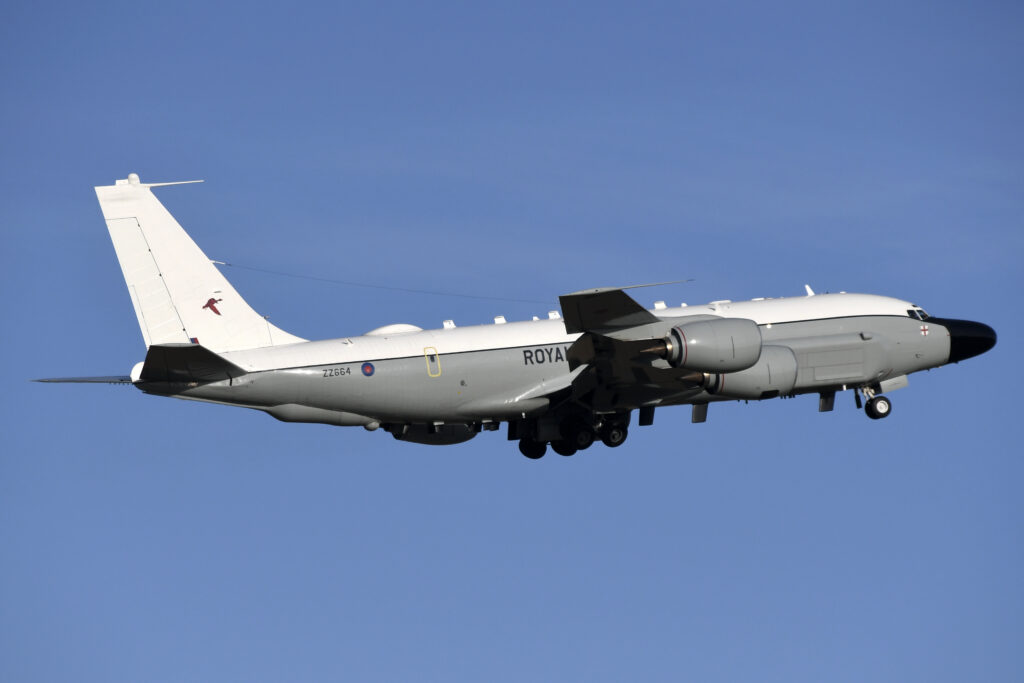
The roles of the exercise players
The F2T2 sequence in ‘Apex Buccaneer’ reflects the continual shift toward the ‘Kill Web’ concept of what has been termed ‘mosaic warfare’, in which individual warfighting platforms are assembled, like the ceramic tiles in a mosaic, to make a larger force package.
These aircraft then fulfil their unique functions and employ their sensors to monitor a battlespace. However, rather than independently feeding this information to a single point, all of the platforms are meshed via advanced datalinks to form a ‘web’, which enables the flow of data between each player to construct a unified air picture, or common operating picture. Following similar principles to ‘sensor-to-shooter connectivity, this enables every asset to see the same information, enabling more focused, timely and accurate responsive orders and actions.
In this context, ‘data’ might refer to target and threat information, adversary positions or adversary air defences. Moreover, it might include friendly aircraft positions, nearby available weapon systems and the desired actions of the command-and-control (C2) infrastructure. ‘Data sharing’, therefore, means this information is disseminated between each asset and ground-based C2 infrastructures via advanced datalinks, in as close to real time as possible. For ‘Apex Buccaneer’, this enabled the exercise players to overcome a variety of simulated threats, ultimately facilitating the successful completion of the B-52s’ mission in striking the simulated targets.
The various ISR assets provided a spectrum of specialist sensors that facilitated each phase of the F2T2 EA process, helping to generate a holistic picture of the battlespace. The P-8 maritime patrol aircraft, for example, can draw on its synthetic aperture radars and optronic sensors to find, fix and track targets at sea or on land across wide areas.
Meanwhile, the RC-135V/W Rivet Joint platform incorporates a dedicated signals intelligence suite, which allows it to scan wide areas to geolocate and analyse electronic emissions throughout the electromagnetic spectrum. This data is integral to accumulating information relating to the positions of entities, such as enemy radar positions or air defences, and to counter adversary jammers. The RC-135 can subsequently disseminate this information in near real time.
The U-2S reconnaissance aircraft integrates optronics, radar and signals intelligence suites to obtain broad area high-resolution imagery and signals intelligence, including the detection of environmental changes to identify concealed objects.
These assets can then disseminate this information to other assets in near real time via tactical datalinks such as Link 16.
In ‘Apex Buccaneer’ Norwegian, US and UK F-35s all participated. These aircraft are said to have employed their advanced data-sharing capabilities to enable the completion of the mission. The USAF stated that “the exercise allowed for the seamless integration of the F-35 data-sharing capabilities, as pilots from all three nations exchanged real-time tactical information, creating a unified air picture, and demonstrated the aircraft’s ability to operate as a force multiplier. The F-35 has also now been tested in its ability to integrate with non-US command-and-control systems through tests which saw the aircraft passing classified data into the RAF’s Nexus system, which can receive ISR data from air, land and sea-based platforms.”
The F-35’s relevance in this instance is demonstrated not only by its combat capabilities, but its multi-faceted sensor suite. Among other things, this comprises an optoelectronic targeting system that facilitates ISR at significant detection ranges using short-wave infrared and infrared markers that help identify blue and red forces at substantial range. Coupled with the aircraft’s stealth capabilities, this means the F-35 can augment dedicated ISR systems within a battlespace, such as more vulnerable strategic platforms that must operate at stand-off ranges. As such, it may be directed to get closer to a threat, using its advanced sensors to take a closer look at a potential target of interest. The F-35 is then able to feed this data directly back into other ISR systems for further analysis, subsequently providing an option to interdict high-value targets itself if necessary.
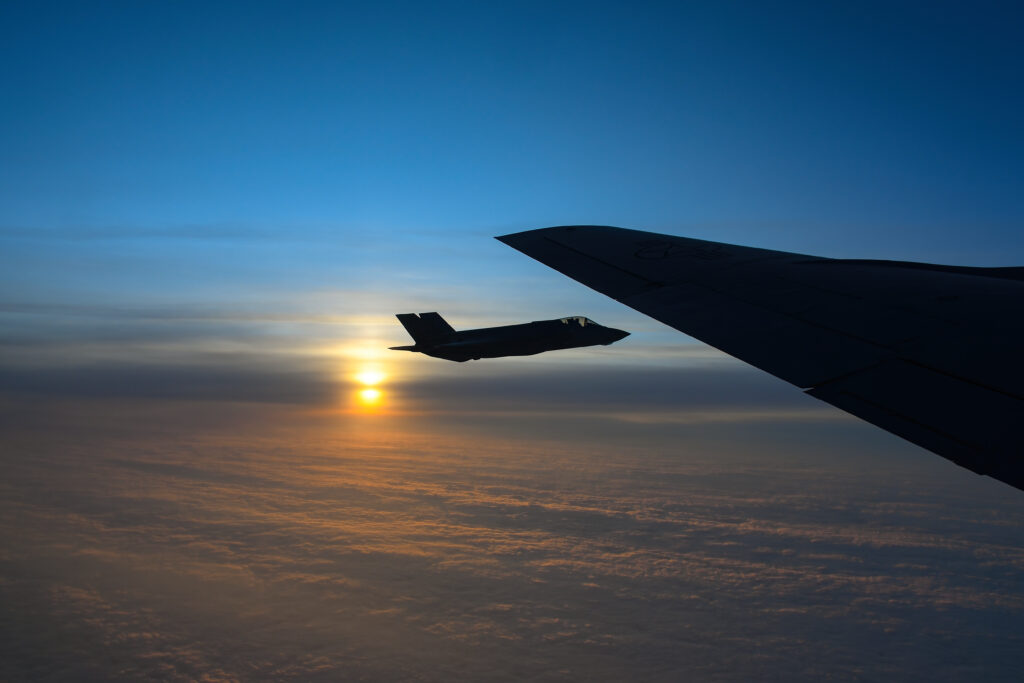
The F-35’s active electronically scanned-array radar, the AN/APG-81, is equally useful for this, comprising both air-to-air and air-to-ground scanning modes that enable the detection and tracking of multiple moving targets simultaneously. Not only does this enhance targeting, but it enhances the joint force’s overall survivability, providing advanced warning of threats at long range, meaning evasive action or advanced strikes can be taken to beat threats before they can strike first. This reduced vulnerability to threats means that the joint force can operate proactively, rather than reactively, accruing a decisive edge. A highly networked F-35, therefore, allows friendly forces to get closer and see more, meaning it can eliminate threats, while ensuring other actors in the battlespace can achieve their objectives more safely.
At the climax of ‘Apex Buccaneer’ Norwegian joint terminal attack controllers (JTACs) on the ground directed the bombers onto their target, enabling their safe ingress, weapon release and egress. JTACs are responsible for directing aircraft to safely strike positions close to friendly forces, providing environmental information, specifying precise target locations and ensuring the protection of civilians and friendly forces. This type of integration is salient to NATO’s collective security apparatus because, in a conflict scenario, it is unlikely that member states will be operating autonomously. Therefore, training using atypical combinations of personnel and assets, such as US strategic bombers guided by Norwegian JTACs, ensures that NATO forces are sufficiently familiar with each other’s operational practices and terminology, facilitating efficient future operations. This explains why demonstrations of different nations’ JTACs integrating with each other’s strike capabilities have become commonplace in recent years.
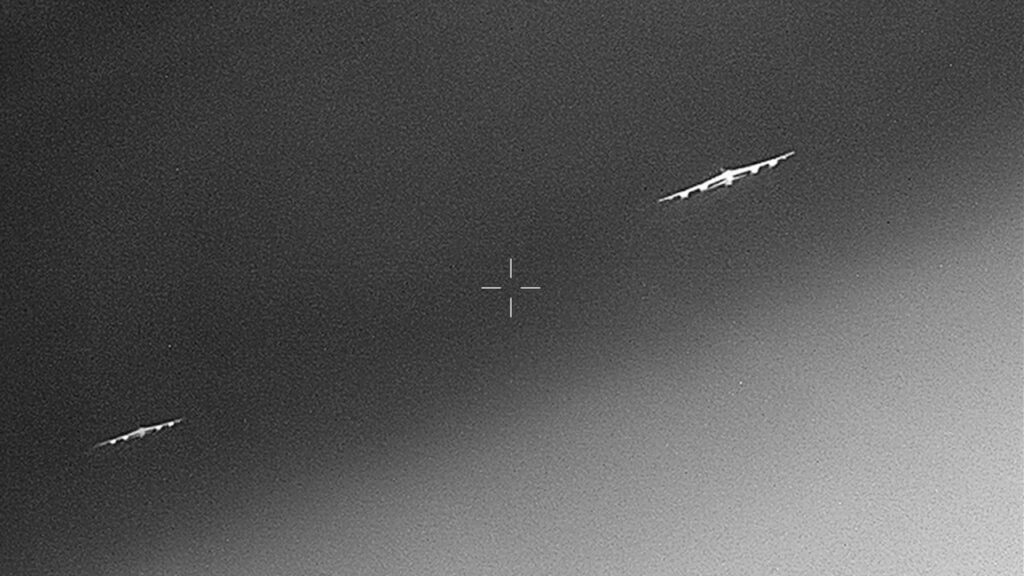
Critical here is that the US is, today, the sole operator of long-range strategic strike capabilities within NATO, with none of these aircraft permanently stationed outside of the contiguous US. Thus, semi-regular deployments of these capabilities through BTF missions enables their frequent integration into multi-national packages like that of ‘Apex Buccaneer’. This familiarises allied and partner nations with supporting and conducting strategic bombing missions, meaning these capabilities can seamlessly support coalition objectives overseas at any time without extensive preparation.
‘Apex Buccaneer’ ultimately demonstrated the ability of NATO forces to ubiquitously employ a variety of different assets through a single doctrine. This is invaluable to enhancing the efficacy of future operations, minimising the ‘moving parts’ of large-scale multi-lateral operations and maximising efficiency. Contrastingly, coalition forces operating independently through their own doctrine would threaten to prolong and delay operations, particularly if the number of steps varied between nations or fell in different orders. In these cases, windows of opportunity could be lost and an otherwise preventable adversary action could occur. Therefore, mutually understood, shared and refined doctrinal practices, which follow the same sequential steps, ensure that, once called upon, each actor is immediately aware of their role and can immediately integrate as part of a joint force. This is essential in today’s complex and dynamic battlespace, where different domains present different threats. This enables friendly forces to quickly calculate a desired outcome, direct capability to achieve it and ultimately influence the course of events, drastically enhancing NATO’s ability to collectively ‘fight tomorrow’.
Fuelling the fight
At the backbone of NATO’s ability to generate its capabilities persistently and at long range are tanker capabilities, which are critical force multipliers. The exercise on 3 December 2024 was supported by KC-135 Stratotankers from the USAF’s 100th Air Refuelling Wing (ARW), based out of RAF Mildenhall in the UK and an RAF Voyager tanker from RAF Brize Norton in the UK. ESD was invited aboard one of the supporting KC-135s, providing a unique insight into how indispensable these vulnerable assets are in enabling air power projection.
The KC-135 can carry approximately 90,718 kg (200,000 lb) of fuel, which at its maximum rate can be dispensed to a receiver aircraft at approximately 4,000 litres per minute (7,000 lb per minute) via a flying boom. Two small ruddervators then allow a boom operator to manoeuvre the boom into the necessary position to conduct refuelling. The aircraft has a ferry range of 17,766 km and an operational range of 2,419 km when loaded with 68,039 kg of transfer fuel.
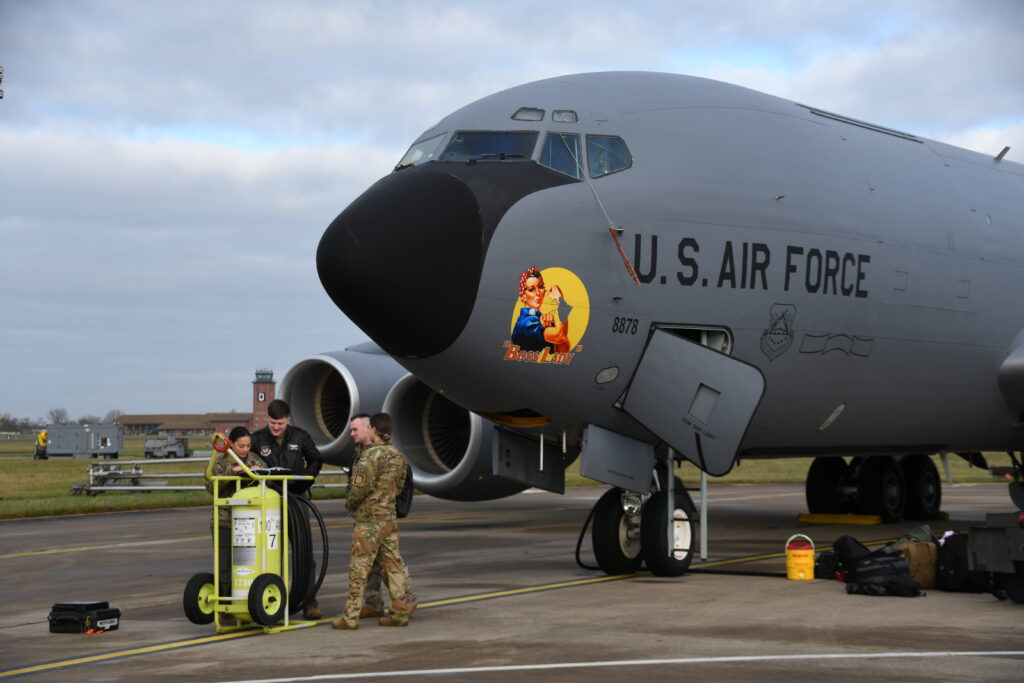
Departing RAF Mildenhall at around midday, the aircraft remained airborne for over seven hours, supporting four ‘receivers’ in the form of USAF F-35As from the 493rd Fighter Squadron based at the RAF Lakenheath. The F-35s joined the tanker for their first refuelling over the North Sea, about midway between the UK and Norway. After the tanker had ensured that the F-35s could reach the primary exercise area, the aircraft remained in orbit northwest of Norway, allowing the F-35s to return for fuel several more times.
The F-35s could then remain airborne and support the task uninterrupted, without having to land or return home. As the sun set, the aircraft continued gracefully orbiting above the North Sea, the boom operator remaining unphased as the F-35s returned for fuel several times under the cover of darkness. The F-35s faultlessly contacted the boom multiple times at night, just as they had done in daylight: a testament to the highly skilled tanker and fighter crews. The mission demonstrated the role tankers play in allowing the air component to cover expansive ranges and remain airborne for long periods, in this case completing the full F2T2 sequence in a single take.
The ability of the exercise participants to remain airborne was fundamental in ensuring the continuity of operations through uninterrupted situational awareness and data flow. Having tankers on hand nearby therefore assures combatant commanders that, should mission requirements evolve and aircraft need to reach new areas or remain in place longer, there is an effective means to facilitate this around the clock.
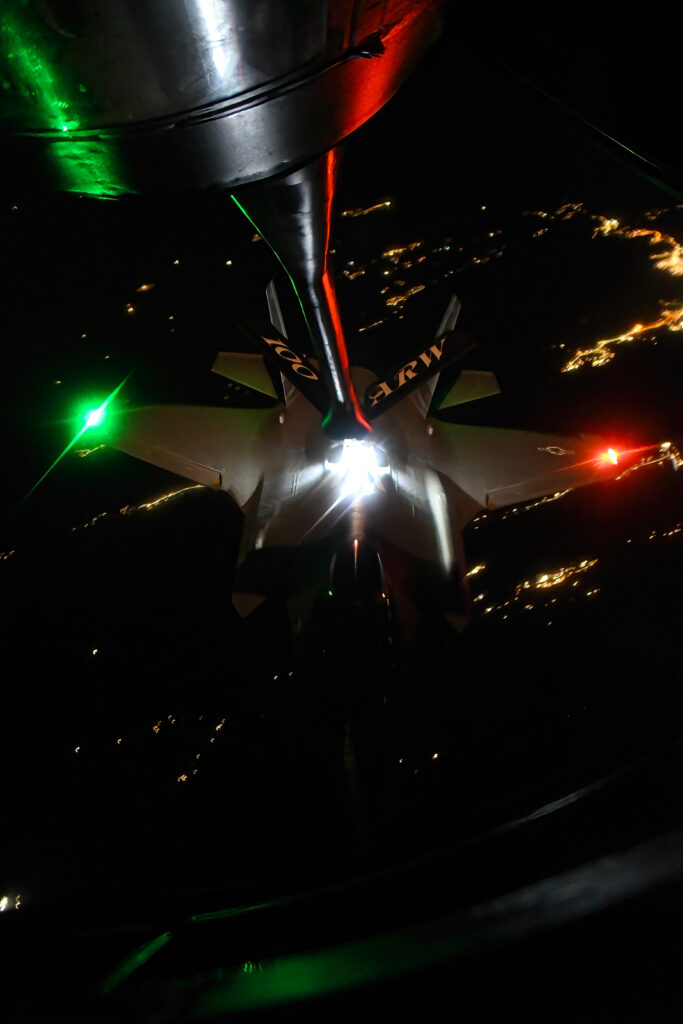
So why Norway? Security discourse and the High North
Situated partly within the Arctic Circle in northwestern Scandinavia, Norway is the northernmost European NATO member state. Norway’s geographical location therefore positions it firmly at the epicentre of the evolving security discourse relating to the High North or the ‘Greater Arctic’ and thus as a leader in efforts to uphold the security of territory and waters within the Arctic Circle and North Atlantic. Taking place in Norway and being led by Norwegian forces, ‘Apex Buccaneer’ was thus conducted against a backdrop of a heightening demand to preserve stability and territorial integrity in the Arctic region.
In the past the Arctic was considered high on NATO’s security agenda, instead characterised by the slogan ‘High North, Low Tension’, but this narrative is rapidly declining in validity. In recent years the potent cocktail of climate change and increased tension between East and West has led to a surge in interest toward the previously low-priority region.
A primary driver of this intensifying interest is climate change, as scientists consistently report that the Arctic is warming almost four times faster than the rest of the globe, melting ice at a significant rate. This has adverse security implications, as the melting sea ice is expanding oceans, thus opening new maritime routes and exposing an abundance of economic and strategic opportunities in the region. Increased maritime access in the Arctic, especially the alleviation of key chokepoints such as in the Barents Sea, expedites the flow of trade through Arctic waters along with access to the region’s natural resources, including previously inaccessible natural gas and valuable minerals.
The enduring relevance of this is characterised by Russia’s clear intent to leverage an advantage in this regard, securing these expanded waterways to pursue its interests of asserting dominance and control in the region. In late December 2024 Moscow unveiled its second armed ice-class patrol vessel, Nikolay Zubov, which is intended to serve as a ‘combat icebreaker’. The vessel is reportedly capable of breaking Arctic ice up to 1.7 m thick while being armed with a 76.2 mm naval gun, Kh-35 anti-ship missiles and Kalibr-type cruise missiles, which can also be used against land-based targets. On one hand, increased access to Arctic waterways means that these capabilities are also key to the protection of Russia’s own territory. However, deploying such advanced capabilities into a previously low-tension region represents a clear attempt to obtain a level of strategic dominance there as it increases in importance.
NATO member states, including the US and the UK, have hence developed Arctic strategies in the wake of this, built around defending against potential threats to freedom of navigation and destabilising behaviours in the region. Simultaneously, Russia has sought to control the resource flow and opportunities in this new Arctic. Coupled with a fraught belief that the decline in sea ice no longer provides Russia with a natural sea border, the Kremlin has sought to transfer any military activity and the threat of escalation toward the Norwegian Sea and the Greenland-Iceland-United Kingdom (GIUK) gap in the North Atlantic. This goes some way to explaining Russia’s reopening of Soviet-era military bases and its regular military drills throughout the Arctic region as it seeks to assert regional military dominance.
In September 2024 a Russian warship fired warning shots toward a Norwegian fishing vessel that was operating in the Barents Sea within Norway’s exclusive economic zone. While it is imperative to note that bilateral co-operation between Russia and Norway regarding the Barents Sea fisheries currently remains intact, such actions can be categorised as destabilising behaviours and thus inherently escalatory. Thus, ‘Apex Buccaneer’, according to the Norwegian Joint Operations Centre commander, Brigadier General Tron Strand, helps demonstrate a “credible deterrent” and show that NATO is “ready to defend the Arctic region”.
Flying to deter: theory and practice
The pervasive strategic interest in the Arctic, coupled with the potential military ramifications, means credible general deterrence is central to preventing aggressive adversarial actions both during peacetime or as tensions rise. As such, NATO members’ High North strategies are centred around fostering close multi-lateral integration and co-operation, necessitating military interoperability to enable collective defence. This constitutes an extended deterrent posture, meaning it is designed to prevent attacks on allied states.
In their most basic form, traditional theories of deterrence understand it as being built upon the ‘three Cs’ of capability, credibility and communication. More specifically, NATO’s view of deterrence stems from maintaining credible military capabilities and upholding the alliance’s Article 5 commitment to mutual defence. Conceptually, these facets are self-explanatory, but what is the purpose of exercises like ‘Apex Buccaneer’ in achieving deterrence in this traditional sense?
Firstly, regional adversaries may acknowledge, and attempt to exploit the fact, that the High North presents unique operational and logistical challenges to states that are less familiar with its environment. Those adversaries may hope that this will inhibit other countries’ effectiveness and deny their ability to support Arctic nations in an Article 5 scenario, largely dictated by adverse weather conditions (extreme cold), the remote nature of the theatre and a lack of infrastructure. Therefore, ‘Apex Buccaneer’ communicates to these actors that NATO can overcome these challenges to conduct multi-domain operations alongside mission partners with ease, irrespective of perceived challenges, thus enhancing deterrent credibility and reducing the potential benefits of opportunistic hostile actions there.
In this vein ‘Apex Buccaneer’ demonstrated NATO’s capability to project assets from across the full spectrum of operations to produce lethal or non-lethal, battle-winning effects at long range. Through force enablers, in particular air-to-air refuelling tankers, assets from multiple different locations were able to support the task for an extended duration. This is critical where the Arctic’s operational environment is particularly strenuous, demonstrating NATO’s ability to overcome the environmental or infrastructure-based challenges.
Finally, and more broadly, the current BTF has seen its B-52s operate in both the High North and North Africa just days apart, although, unlike in the Arctic, where peer and near-peer threats predominate, the primary mission in the African area of responsibility is currently centred around countering extremism and violent non-state actors. Therefore, by operating in this manner, the BTF communicates the credibility of NATO’s capabilities, demonstrating its robustness and adaptability by employing a single capability in support of drastically different mission sets and in different environments. This ability to support different objectives simultaneously or in quick succession reflects NATO’s true ability to respond to threats in support of Article 5, which would inevitably present a huge spectrum of different operational challenges.
In sum, ‘Apex Buccaneer’ and NATO’s High North exercises achieve deterrence’s three Cs by signalling the unity of NATO’s member states and demonstrating the extent of their capabilities and their robustness in overcoming operational and logistical challenges to fight wherever required.
